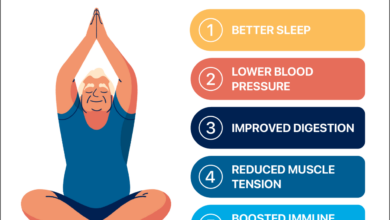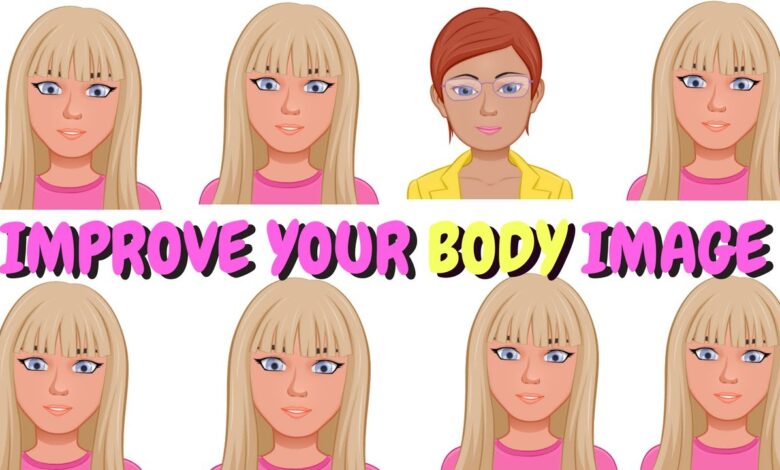
How to Build a Better Body Image: A Guide to Self-Love and Acceptance
How to build a better body image is a journey of self-discovery and acceptance. It’s about learning to appreciate your body for what it does, not just how it looks. We live in a world that bombards us with unrealistic beauty standards, leading many to feel inadequate and dissatisfied with their bodies.
This can have a profound impact on our mental health and overall well-being. But the good news is that you can cultivate a healthier relationship with your body by challenging negative thoughts, embracing self-compassion, and engaging in practices that promote body positivity.
This guide will explore the multifaceted nature of body image, delving into the societal influences that shape our perceptions, and offering practical strategies for building a more positive and accepting relationship with ourselves. We’ll discuss the importance of self-acceptance, the role of healthy habits, and how to navigate the pressures of unrealistic beauty standards.
Ultimately, the goal is to empower you to embrace your unique body and live a life free from the shackles of negative body image.
Understanding Body Image
Body image is how you see and feel about your physical appearance. It’s a complex concept that goes beyond simply looking in the mirror. Your body image can influence your thoughts, feelings, and behaviors, ultimately impacting your mental health and overall well-being.
Factors Influencing Body Image
A multitude of factors contribute to shaping your body image, often interacting in complex ways. These factors can include:
- Societal Pressures:Our culture often promotes unrealistic beauty standards through advertising, social media, and popular media. These idealized images can create a sense of inadequacy and dissatisfaction with one’s own body.
- Media Portrayals:The media frequently presents narrow and often unattainable beauty standards, often through airbrushed images and unrealistic representations of bodies. This constant exposure can lead to a distorted perception of what is considered “normal” or “desirable.”
- Personal Experiences:Your personal experiences, including comments from family, friends, or peers, can significantly influence your body image. Bullying, teasing, or negative feedback about your appearance can have a lasting impact on how you view yourself.
- Biological Factors:Genetic predisposition, hormonal changes, and medical conditions can also play a role in body image. For example, individuals with certain genetic predispositions may be more susceptible to developing negative body image.
- Psychological Factors:Mental health conditions such as depression, anxiety, and eating disorders can significantly impact body image. These conditions can lead to distorted perceptions of one’s body and contribute to negative self-esteem.
Negative Body Image Manifestations
Negative body image can manifest in various ways, affecting your thoughts, feelings, and behaviors.
- Negative Thoughts:Individuals with negative body image may engage in constant self-criticism, focusing on perceived flaws and imperfections. They may compare themselves to others, feeling inadequate or envious. These negative thoughts can lead to feelings of shame, guilt, and low self-worth.
- Negative Feelings:Negative body image often leads to feelings of sadness, anxiety, depression, and anger. These feelings can impact your social interactions, relationships, and overall quality of life. You might feel uncomfortable in your own skin, avoiding social situations or activities where you feel self-conscious about your body.
- Negative Behaviors:Negative body image can lead to unhealthy behaviors, such as excessive dieting, overexercising, or engaging in unhealthy eating habits. Some individuals may turn to cosmetic procedures or engage in self-harm as a way to cope with their body image concerns.
Cultivating Self-Acceptance
Shifting from self-criticism to self-acceptance is a journey, not a destination. It’s about developing a kinder, more compassionate relationship with yourself, acknowledging your strengths and imperfections without judgment. This journey involves challenging negative thoughts, embracing your body’s unique qualities, and practicing self-compassion.
Challenging Negative Self-Talk
Negative self-talk can be a powerful force, shaping our self-perception and impacting our well-being. It’s like having an inner critic constantly whispering doubts and criticisms. To cultivate self-acceptance, it’s crucial to learn to identify and challenge these negative thoughts.
- Become Aware:Pay attention to your inner voice. Notice the negative thoughts that arise, such as “I’m not good enough” or “I’m too fat.” Be a silent observer, simply noticing these thoughts without judgment.
- Question the Evidence:Once you identify a negative thought, ask yourself: “Is this thought true?” “Is there any evidence to support this?” Often, these thoughts are based on unrealistic expectations or distorted perceptions. Challenge the validity of these thoughts.
- Reframe the Thought:If a negative thought persists, try reframing it into a more positive or neutral perspective. For example, instead of “I’m so clumsy,” try “I’m still learning and getting better.” This shift in perspective can help you view yourself in a more balanced way.
Building a better body image is about celebrating what your body can do, not just how it looks. Fueling your body with nourishing foods like a delicious vegan super greens tomatillo posole can be a great way to show yourself love and respect.
Remember, self-care is about taking care of your mind, body, and spirit, and that includes making choices that nourish you from the inside out.
- Practice Self-Affirmations:Affirmations are positive statements that can help to reprogram your subconscious mind. Regularly repeating positive affirmations about your body and yourself can help to counter negative thoughts and build self-esteem. For example, you could say “I am strong and capable,” or “I am worthy of love and acceptance.”
Self-Compassion and Body Neutrality
Self-compassion is crucial for cultivating self-acceptance. It involves treating yourself with kindness, understanding, and acceptance, just as you would treat a loved one. Body neutrality is a related concept, where you acknowledge and accept your body without judgment or desire to change it.
It’s about focusing on what your body does for you, rather than how it looks.
- Practice Self-Kindness:When you experience negative thoughts or feelings about your body, treat yourself with the same compassion and understanding you would offer a friend in a similar situation. Instead of berating yourself, acknowledge your feelings and offer yourself words of encouragement and support.
- Focus on Function:Instead of fixating on your body’s appearance, appreciate what your body can do. Focus on the amazing things your body allows you to experience: walking, running, dancing, laughing, and loving. These are all powerful reminders of your body’s strength and resilience.
- Challenge Societal Beauty Standards:Remember that beauty standards are often unrealistic and unattainable. They are often influenced by social media and marketing, and they can lead to dissatisfaction and body image issues. Challenge these standards by celebrating diversity and individuality. Focus on what makes you unique and beautiful, rather than trying to fit into a mold that doesn’t reflect who you truly are.
Practicing Gratitude
Gratitude is a powerful tool for cultivating self-acceptance. When you focus on what you’re grateful for, you shift your attention away from negativity and cultivate a more positive outlook. This can help you appreciate your body for all that it does for you.
- Body Appreciation List:Create a list of things you’re grateful for about your body. This could include its strength, flexibility, resilience, or any other qualities you appreciate. Take time each day to review this list and remind yourself of all the amazing things your body does for you.
- Body Scan Meditation:Take a few minutes each day to do a body scan meditation. Focus your attention on different parts of your body, noticing sensations without judgment. Express gratitude for the way your body feels, even if it’s just the warmth of your skin or the rhythm of your breath.
- Movement Appreciation:Choose an activity you enjoy, such as dancing, yoga, or walking. As you move, focus on the sensations in your body. Appreciate the way your muscles work, the way your joints move, and the overall feeling of movement.
Express gratitude for the ability to move freely and experience the joy of physical activity.
Healthy Body Image Practices
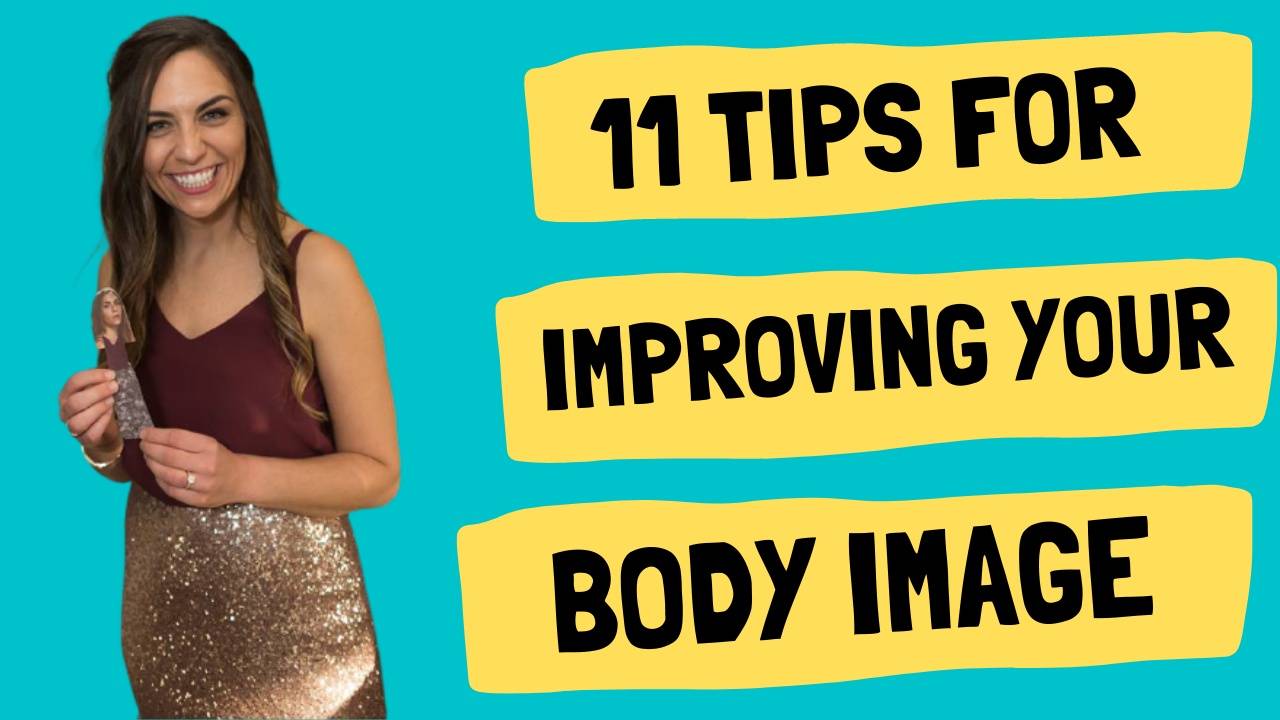
Cultivating a healthy body image involves adopting practices that promote well-being and self-acceptance. This section will delve into the importance of healthy eating habits and regular physical activity, explore activities that foster body positivity and self-care, and provide examples of how to incorporate body-positive messages into your daily life.
Building a better body image is about celebrating your unique self, and that includes fueling your body with good food. One of my favorite go-to spots for a quick and satisfying meal is Chipotle, but I’ve learned a few healthy ways to order to make sure I’m getting the most out of my meal.
When you focus on nourishing your body, you’re taking a positive step towards loving and accepting yourself, which is a crucial part of building a healthy body image.
The Role of Healthy Eating Habits and Regular Physical Activity, How to build a better body image
Healthy eating habits and regular physical activity are crucial for overall well-being and contribute significantly to a positive body image. These practices provide numerous benefits, including improved physical health, increased energy levels, and enhanced self-esteem. By prioritizing a balanced diet and engaging in regular exercise, individuals can develop a more positive relationship with their bodies and appreciate their capabilities.
Activities that Promote Body Positivity and Self-Care
Engaging in activities that promote body positivity and self-care can be instrumental in building a healthy body image. These activities allow individuals to focus on their well-being and appreciate their bodies for what they can do rather than how they look.
Building a better body image is about celebrating your unique self, and that includes nourishing your body with delicious and healthy food. For a light and flavorful meal that makes you feel good inside and out, try this shrimp asparagus zoodle pasta recipe.
The combination of fresh, vibrant ingredients will not only fuel your body but also remind you of the importance of self-care and appreciation for all that you are.
- Yoga: Yoga combines physical postures, breathing techniques, and meditation, promoting flexibility, strength, and mindfulness. It can help individuals connect with their bodies and develop a sense of self-awareness and acceptance.
- Dance: Dance is a form of expressive movement that allows individuals to release energy, explore their creativity, and experience joy through physical expression. It can help individuals feel confident and comfortable in their bodies.
- Spending Time in Nature: Immersing oneself in nature has been shown to have numerous mental and physical health benefits. Spending time outdoors can reduce stress, promote relaxation, and foster a sense of appreciation for the natural world.
- Creative Expression: Engaging in creative activities, such as painting, writing, or music, can be a powerful form of self-expression and self-discovery. These activities allow individuals to explore their emotions and thoughts in a safe and constructive way.
Incorporating Body-Positive Messages into Daily Routines
Body-positive messages can be incorporated into daily routines and interactions with others, helping to create a more positive and accepting environment. Here are some examples:
- Affirmations: Start and end your day with positive affirmations that focus on your strengths and appreciate your body’s abilities. For example, “I am grateful for my strong and healthy body,” or “I am capable of achieving my goals.”
- Social Media: Be mindful of the messages you consume on social media. Follow accounts that promote body positivity and diversity, and unfollow accounts that make you feel insecure or inadequate.
- Conversations: Engage in conversations that promote body positivity and challenge negative stereotypes. For example, you could talk about the importance of body diversity or share your own experiences with body image.
Challenging Societal Norms
Our body image is heavily influenced by the messages we receive from society, particularly through media and advertising. These platforms often present unrealistic and narrow beauty standards, contributing to feelings of inadequacy and dissatisfaction with our own bodies. To foster a healthier body image, it is crucial to challenge these societal norms and develop a critical understanding of how media shapes our perceptions.
Analyzing Media’s Impact on Body Image
The media plays a significant role in shaping our understanding of beauty and body image. Magazines, television shows, movies, and social media platforms frequently present idealized and often unattainable images of bodies. These images are often heavily edited, using filters, makeup, and other techniques to create a flawless and unrealistic representation of what is considered attractive.
This constant exposure to unrealistic beauty standards can lead to feelings of inadequacy, dissatisfaction, and a desire to conform to these unattainable ideals.
Strategies for Critical Evaluation of Media Portrayals
To challenge the influence of unrealistic beauty standards, it is essential to develop critical thinking skills when evaluating media portrayals of bodies. Here are some strategies:
- Recognize the Role of Editing and Filters:Be aware that images in media are often heavily edited to create a flawless appearance. Recognize that what you see is not always a true representation of reality.
- Consider the Diversity of Beauty:Remember that beauty comes in all shapes, sizes, and colors. The media often presents a limited and narrow view of what is considered attractive. Seek out and appreciate diverse representations of bodies.
- Question the Messages:Think critically about the messages being conveyed by media. Are they promoting a healthy and realistic view of body image? Or are they reinforcing unrealistic beauty standards?
- Focus on Real People:Engage with content that features real people with diverse body types and backgrounds. This can help to broaden your understanding of beauty and challenge the narrow representations often presented in the media.
Promoting Diversity and Inclusivity in Body Representations
It is crucial to promote diversity and inclusivity in representations of bodies in the media. This means featuring people of all shapes, sizes, ages, ethnicities, and abilities.
- Support Diverse Media:Patronize media outlets that prioritize diversity and inclusivity in their representations of bodies. This can send a message that you value a broader definition of beauty.
- Advocate for Change:Speak out against unrealistic beauty standards and advocate for more diverse and inclusive representations of bodies in media. This can include writing letters to media companies, supporting organizations promoting body positivity, and engaging in online conversations about these issues.
Seeking Support
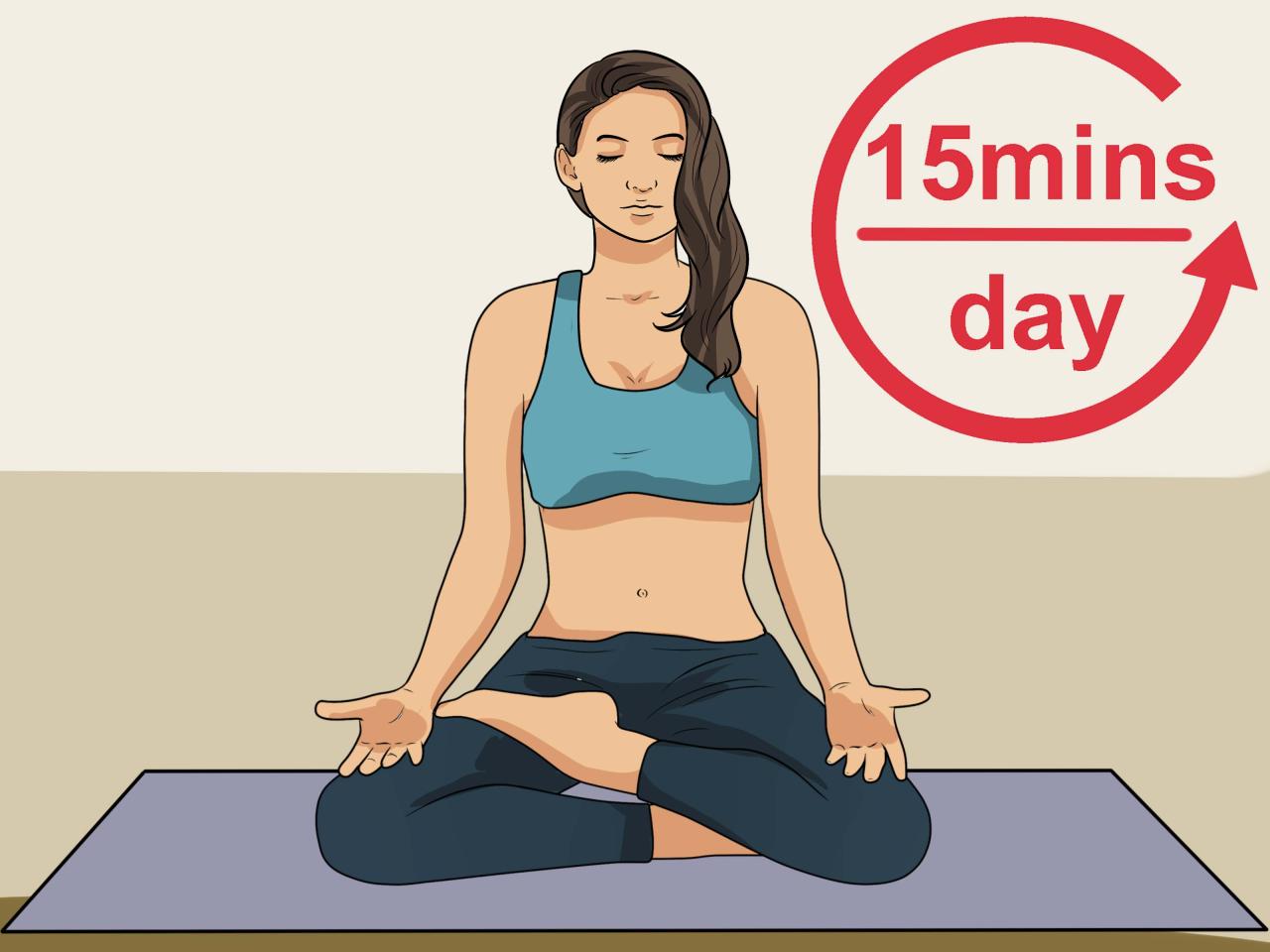
Navigating the complexities of body image can be challenging, and seeking support can be a crucial step in your journey towards a healthier relationship with your body. While self-work and positive practices are essential, professional guidance and a supportive community can offer invaluable tools and resources.
Professional Help
Therapists and counselors specializing in body image issues can provide a safe and confidential space to explore your thoughts, feelings, and behaviors related to your body. They can help you:
- Identify the root causes of your negative body image.
- Develop coping mechanisms for challenging thoughts and feelings.
- Challenge negative self-talk and develop a more positive self-image.
- Explore the impact of societal pressures on your body image.
- Develop healthy eating habits and exercise routines.
Support Groups
Support groups offer a valuable platform for connecting with others who share similar experiences. They provide a sense of community, validation, and shared understanding.
- These groups allow you to share your struggles, learn from others’ experiences, and gain practical tips for managing body image concerns.
- Support groups can foster a sense of belonging and reduce feelings of isolation.
- They offer a space for mutual support and encouragement, promoting a sense of hope and resilience.
Finding a Therapist
Finding a therapist who is a good fit is crucial. Consider these tips:
- Look for therapists specializing in body image issues, eating disorders, or related areas.
- Read online reviews and testimonials from previous clients.
- Schedule an initial consultation to discuss your needs and see if you feel comfortable with the therapist.
- Trust your instincts and choose a therapist who makes you feel safe, understood, and supported.
Conclusive Thoughts: How To Build A Better Body Image
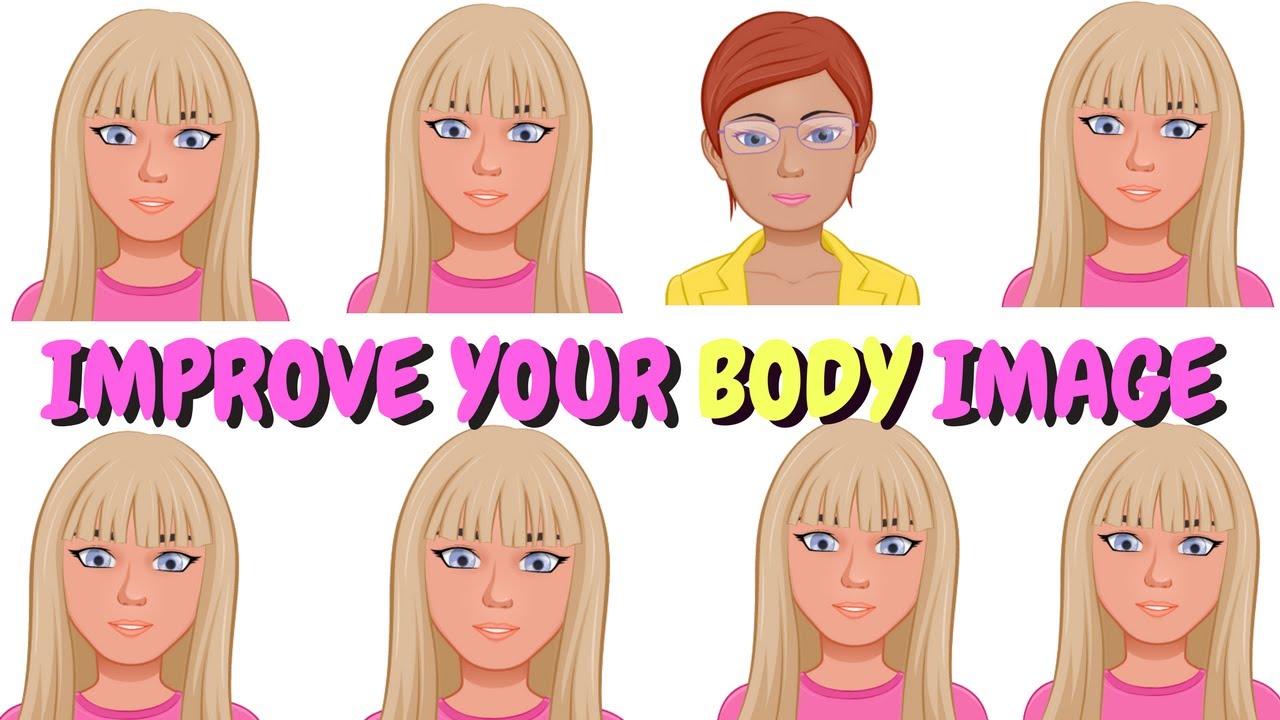
Building a better body image is an ongoing process, but it’s a journey worth taking. By understanding the factors that influence our body image, challenging negative self-talk, and embracing self-compassion, we can cultivate a healthier and more positive relationship with ourselves.
Remember, you are worthy of love and acceptance, regardless of your size, shape, or appearance. Embrace your unique beauty, celebrate your body’s capabilities, and strive for a life filled with self-love and acceptance.





